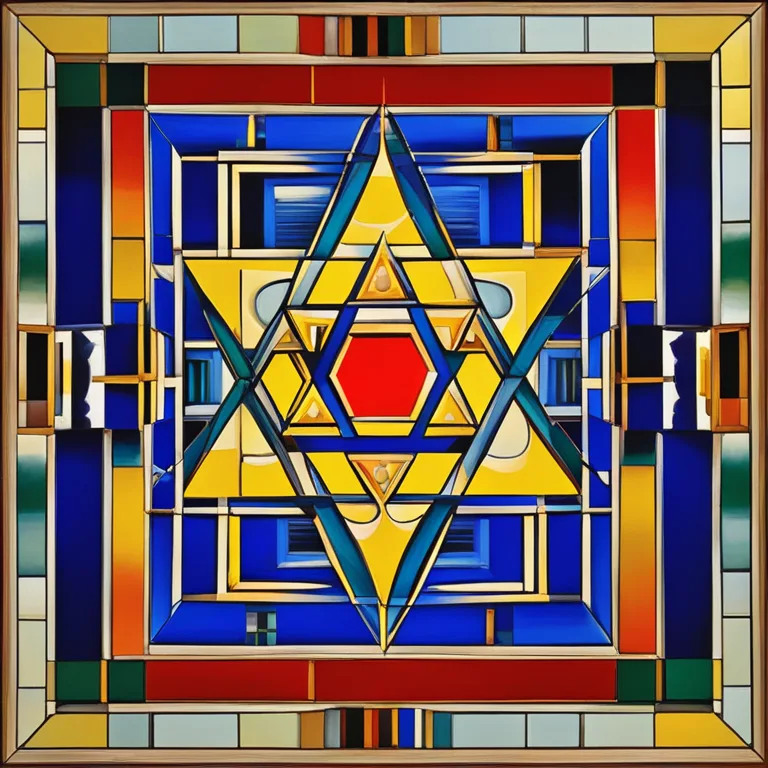
Jewish Meditation: Pathways of the Spirit
Discover the tranquility and depth of Jewish meditation techniques for spiritual growth and awareness.
article by Hina Kurosawa
The Essence of Jewish Meditation
Jewish meditation offers a rich tapestry of practices, drawing from millennia-old traditions to deepen spiritual awareness and connection with the Divine. Rooted in the Jewish philosophy and mysticism, these techniques often involve contemplation on sacred texts, the names of God, and the mysteries of creation. Through this process, practitioners seek to achieve d'vekut, or cleaving to the Infinite, fostering an intimate bond with the Creator.

Kabbalistic Contemplation
One of the most profound forms of Jewish meditation is inspired by Kabbalah, the esoteric dimension of Jewish thought. Kabbalistic meditation might focus on the sefirot — the emanations through which the Divine manifests in the world — to understand the interconnectedness of all things and the divine sparks within. It is a journey that requires diligence and concentration, encouraging the meditator to visualize the sefirotic tree and channel divine energy through mindful intention.

Hitbonenut and Hitbodedut
Two techniques central to Jewish mystical practice are Hitbonenut and Hitbodedut. Hitbonenut involves analytical introspection, often accompanied by philosophical or textual study that leads to a higher state of consciousness. In contrast, Hitbodedut, popularized by Rebbe Nachman of Breslov, emphasizes spontaneous, personal prayer and dialogue with God in seclusion. This technique encourages openness and emotional honesty, and is less structured than traditional forms of prayer.

Mantra Meditation
Similar to Eastern traditions, Jewish practice incorporates the use of mantras, or repetitive sounds and phrases. This can involve the repetition of a divine name or a verse from scripture to achieve focus and spiritual upliftment. This method is believed to draw down spiritual energy and purify the soul, connecting the individual to higher realms of consciousness.

Guided Imagery and Visualization
Guided imagery is another powerful tool in Jewish meditation, where visualizations are used to enter a meditative state. Practitioners might envisage themselves entering holy places, ascending through spiritual worlds, or experiencing biblical events firsthand. This form of meditation often accompanies the study of sacred texts, enhancing understanding and personal relevance.
Practical Implementation
Integrating Jewish meditation into daily life can begin with setting aside a few minutes a day for quiet reflection and prayer. As practitioners grow more comfortable, they may extend their sessions and explore different techniques. Consistency and intention are key elements for meditation, with each practice offering a path to enrich one's spiritual life and connect more deeply with divine purpose.
Meditation in the Modern World
In these times of uncertainty, Jewish meditation offers solace and a deep sense of grounding. As we look beyond 2024, the principles of these age-old practices provide a compass for navigating the complexities of life. They offer not only insight into personal destiny and harmony but also help in developing compassion and understanding in our interactions with others.
Published: 12/20/2023
Modified: 12/20/2023
More predictions
Come back here soon to learn more about yourself and your future


Innovative Meditation Techniques
Discover modern meditation practices that harmonize mind, body, and spirit in our fast-paced world.


Meditation Methods to Reduce Blood Pressure
Discover effective meditation techniques that can aid in managing and reducing high blood pressure for better overall health.


Learning Meditation Techniques
Learn key meditation practices for inner peace and clarity in our comprehensive guide.